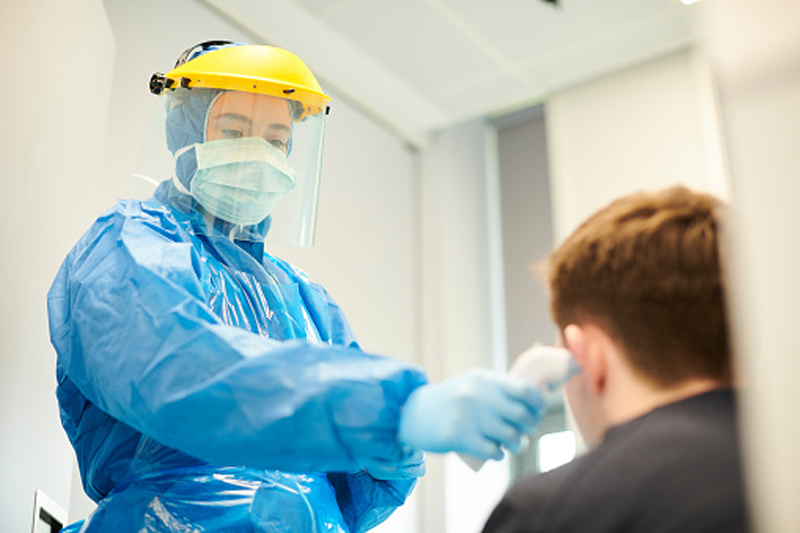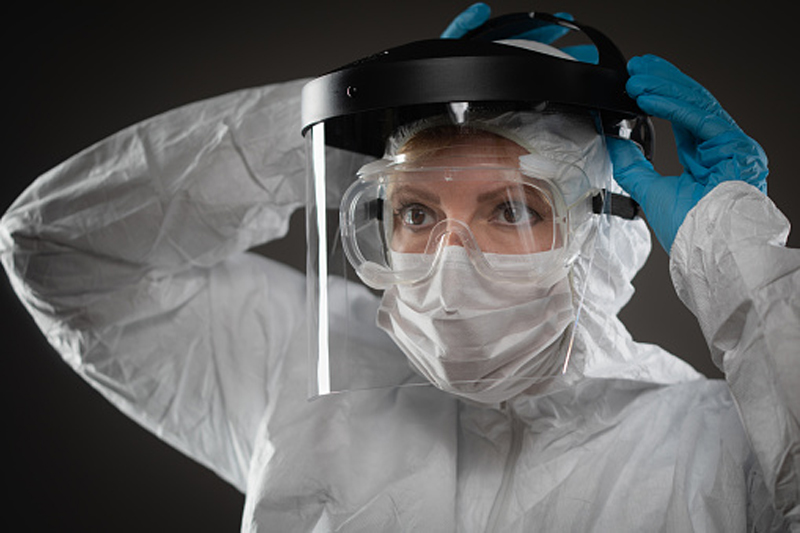 Personal protective equipment, abbreviated PPE, entails certain items that individuals must wear to avoid contact with potentially harmful substances, such as blood or other bodily fluids. These can contain infectious components; therefore, it is essential for any health worker always to wear PPE.
Personal protective equipment, abbreviated PPE, entails certain items that individuals must wear to avoid contact with potentially harmful substances, such as blood or other bodily fluids. These can contain infectious components; therefore, it is essential for any health worker always to wear PPE.
Some of these PPE includes face masks, aprons, and gloves – and it may sound easy to use, but there are a few factors that need to be taken into consideration in order to use these effectively. Incorrect use of protective equipment can result in diminished efficiency and harm to the individual. In this article, we will guide you on how to use PPE for health workers properly.
When Do I Need To Wear PPE?
Any health worker should wear protective equipment when coming into contact with patients, particularly where there is a possibility that there will be bodily fluids. In every health and social care setting, there will be policies in place advising you exactly when to use PPE. Therefore, make yourself familiar with these protocols to ensure you follow the strict guidelines in place.
Disposable Gloves
Gloves are one of the required protective equipment that health workers must wear. However, these are not required for the vast part of the daily routine of workers and should not be worn for no reason, as they will not allow you to wash your hands, which can be harmful to the patient. You should wear disposable gloves when you know you will be exposed to bodily fluids, broken skin, or dirty paraphernalia, and hazardous substances such as chemicals and disinfectants. Additionally, please bear in mind that disposable gloves are often made from latex, which some people are seriously allergic to. Before dealing with a patient, you must always ask them if they have any allergies in order to avoid reactions.
Face Masks
Face masks are often a common piece of equipment used by health workers to protect them. They are designed to be worn during healthcare processes in order to avoid the prevention of infections in patients as well as the staff. Face masks act as a barrier catching bacteria that is in liquid droplets and aerosols from the mouth and nose. All protective equipment must be FDA approved, as advised by DMB Supply, to ensure that maximum protection is in place, which you can check on the suppliers’ website. Not every equipment item will be designed to offer full protection, which will decrease the PPE’s efficiency. It is important to note, this not only protects the staff member but it also protects the patient – if you are dealing with a vulnerable patient prone to developing serious health conditions, it is vital that you wear face masks if you have a common cold, which could have serious effects on the patient.
Disposable Aprons
Similar to what we have just discussed above, aprons are not required to conduct most daily tasks in health and social care environments. You will definitely have to wear them when executing or helping in a procedure that might implicate the splashing of bodily fluids, when supporting the patient with personal hygiene and when cleaning and tidying in the patient’s living area. You will have different colored aprons to conduct different tasks in most places. Therefore, always double-check the policies in your workplace. Additionally, always wash your hands before wearing your apron and after disposing of it.
Visors
This is another piece of protective equipment that is seen in many healthcare professions, and now with a global pandemic among us, the use of this tool is becoming increasingly more familiar for all of us. The visors are a great way to protect your eyes and others from harmful bacteria as it acts as a physical barrier. This is different to face masks, which should be used once and thrown away after each use as they can harbour bacteria. On the other hand, visors can be properly cleaned with adequate chemical products.
Training
Every healthcare worker should have specialised training on how to wear PPE appropriately. It is not simply enough to wear the equipment, as when you use it incorrectly, it becomes ineffective, and you may be exposed to viruses and bacteria or expose the patient as well. If you have not been offered this training, you must discuss this with your manager so that the appropriate arrangements can be made. Remember that safety comes first. If you do not have the skills and training, you should not yet be doing the job.
Removing and Disposing of PPE
Wearing PPE is just as important as safely disposing of it. Obviously, they act as a barrier between you and the bacteria, meaning that the bacteria will remain on the equipment, which can be easily transmitted to other surfaces or people if appropriate disposal does not occur. The vast majority of PPE equipment is actually created to be once worn; this includes aprons, gloves, and face masks. Therefore you must dispose of them after every single use.
Proper Cleaning
As we discussed above, one single individual can use some PPE equipment multiple times, as is the case for visors. However, you must ensure that it is properly clean at all times. Whilst you clean the visor, it is important to have clean gloves on as well as a face mask to prevent the spreading of any bacteria that may be on this tool. Then you can easily wash it with water and anti-bacterial detergent and finish the process with an alcohol wipe. Let it dry in a safe area, and it is ready to be used again. This is all part of what you should be learning as part of your health and safety training delivered at work.
 Wearing personal protective equipment is essential for health workers in order to prevent bacteria and infections from spreading. Make sure that you are wearing the appropriate PPE and correctly so that you and your patients can be fully protected. Additionally, you should also be mindful of how to dispose of the equipment or clean it after you are finished, as this process could jeopardize all the carefulness you had during the procedure with the client.
Wearing personal protective equipment is essential for health workers in order to prevent bacteria and infections from spreading. Make sure that you are wearing the appropriate PPE and correctly so that you and your patients can be fully protected. Additionally, you should also be mindful of how to dispose of the equipment or clean it after you are finished, as this process could jeopardize all the carefulness you had during the procedure with the client.

